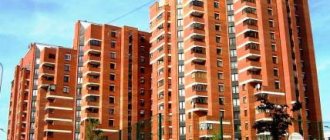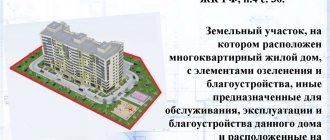Have questions? Get advice from a car lawyer:
8 (800) 350-29-83 — Regions of Russia 8 Moscow and Moscow region. 8 St. Petersburg and Len. region
It's fast and free!
The problem of placing transport in urban areas is not fully regulated by law today. Therefore, few people know about the existing order, and meanwhile, the standards for the number of parking spaces for a residential building are regulated by local urban planning rules, or PZZ (principles of land use and development).
Lack of free space
It is no secret that in many Russian cities there is an acute issue of lack of parking spaces in courtyards. Today, almost every family has personal transport, and finding a free space often becomes a headache for car owners.
It has also become common for new buildings, gas stations or supermarkets to appear on a site near a residential building that was not formed at the time and has not become the property of the residents. Again, these treasured spaces are automatically reduced and residents of high-rise buildings have to leave their cars on sidewalks, lawns and even on playgrounds. Anything that is not only unsightly, but also illegal, is punishable by a fine.
Eco-friendly parking
Eco-parking is a parking lot made of special plastic or reinforced concrete gratings. Vegetable soil is poured into the trellis segments and mixtures of herbs are grown on it.
Thus, the cars are parked on a kind of lawn, which creates an environmentally friendly microclimate of the site: dust levels in the air are reduced and overheating of the area is prevented.
Yes, eco-parking lots may be more difficult to maintain: you have to mow the grass. But there is a way out; there are low-growing and slow-growing lawns. But there is no need to sweep and drain rainwater!
The production and use of lawn gratings is growing every year; there is a wide variety of materials and shapes. This is very beautiful and environmentally friendly, but so far it has been little used. It remains to be seen when developers will want to attract apartment buyers with another feature: eco-parking on site.
Rights by organization
Previously, designers provided new buildings only with narrow driveways along the houses and pockets for several cars. Others have built underground parking lots or multi-level above-ground garages, but not everyone can afford their cost. As a result, the places planned for the project are empty, and there is still nowhere to park the car.
Not long ago, regional and municipal programs were in place to improve courtyard space, including expanding parking lots. Hundreds of residential buildings and the space around them were put in order, but they did not have time to equip everything. In the current economic situation, such programs have been suspended.
Attention! Today, the real way to eliminate the problem is construction, planning, as well as preliminary calculation of parking spaces, directly by residents. After all, the local area is also their property and area of responsibility.
Standards for calculating the number of parking lots
The number of parking lots for residents should be calculated according to regional standards, and for service companies - according to regional standards or according to Appendix “G” of SP 42.13330.2016. in accordance with SP 160.1325800.2014 “Multifunctional buildings and complexes”.
There is no point in repeating regional standards and Appendix “G” SP 42.13330.2016 in this article, but the calculation example given in the next section clearly shows the principles of design and placement of parking lots.
The total number of required parking lots is the sum of the required parking lots for each building (part of a building) and structure in the block.
Education Service
Detailed methodological recommendations have been developed for active owners to provide assistance in preparing documentation and carrying out work (taking into account the requirements of the Municipal Economy Code of the Russian Federation dated December 29, 2004). All standards for parking spaces for residential buildings are also indicated here. The collected materials take into account the results of an analysis of foreign and domestic experience in improving the efficiency of using parking zones in cities:
- First of all, you need to get the support of the majority of owners, for which a general meeting is held. Two-thirds of one hundred votes and a decision is made (so that later questions from the owners and the city administration do not arise).
- Request a copy from the city tablet at a scale of 1:500 (a copy of a certain part of the topographic and geodetic plan, it describes a specific territory or terms of reference for topographic surveying with a graphic application). It is issued at the city center of urban planning and architecture.
- Then a diagram of the yard should be drawn up, taking into account future parking. It is carried out by the design organization in compliance with all requirements.
Recommendation! The formalized position for each parking space can be assigned either to the owner of the property or to a specific apartment.
Expenses without income
Andrey Strigalev estimates the cost of constructing a parking space in an underground parking lot at 700 thousand rubles, in a surface parking lot - 450 thousand rubles. Executive Director of Severin Development Irina Trapeznikova has a different estimate for a detached multi-level surface parking lot - 19.5 thousand rubles. for 1 sq. m. But multi-storey free-standing parking lots spoil the appearance of residential complexes in the case of block development and are just as unprofitable from the point of view of sales efficiency. Therefore, most often the developer opts for underground parking.
Due to the high cost of construction and installation work, a high price is formed. Maria Litinetskaya says that there are no uniform rules for pricing parking. According to the data, at the end of 2017, in new buildings in the mass segment, the cost of a space in a surface garage averaged 770 thousand rubles. (from 240 thousand to 1.4 million rubles), in underground - an average of 1.2 million rubles. (0.6-3.6 million rubles). In business class there are no surface parking lots, and underground ones cost 2.2 million rubles. (from 0.86 million rubles to 6.5 million rubles), in the premium housing segment the minimum price for a parking space is 0.68 million rubles, the maximum is 9.5 million rubles. In residential complexes that belong to the middle segment, the cost of parking is 3.5 million rubles, in the elite segment - up to 18 million rubles. “The price depends on the stage of construction readiness of the house and the parking coefficient,” explains Ms. Litinetskaya. For example, in comfort-class residential complexes the parking coefficient ranges from 0.3 to 1.07 for each apartment. The segment average is 0.7. “The higher the coefficient, the earlier the parking lot is put up for sale, at a lower price,” says Maria Litinetskaya. Buyers of expensive housing have other options, so the economics of projects make it possible to sell parking immediately at a high price at the appropriate stage of construction readiness of the house.
The average parking sales volume that developers can focus on is 0.5 parking spaces in an underground parking lot per apartment, 0.2 in a surface multi-level parking lot (also per apartment). “It follows from this that every second apartment buyer buys a space in an underground parking lot and every fifth one buys a space in a surface parking lot,” explains Dmitry Tsvetov, director of marketing and product development at A101 Group of Companies.
Most often, the start of sales of parking spaces in residential complexes occurs at the early stage of building construction and coincides with the start of apartment sales. “But at this stage, the pace of sales is below average: 0.4 underground parking per apartment and 0.15 above-ground,” says Mr. Tsvetov, adding that by the time the building is put into operation, about 20% of the parking spaces that usually are implemented within a year. “But we must take into account that the real effective demand for parking at a price of 700 thousand rubles. for a place in projects in the affordable price segment is usually low,” adds Dmitry Tsvetov, noting that therefore, developers of comfort-class housing carefully calculate the ratio of guest parking, places for sale and develop programs that stimulate sales (interest-free installments, mortgages, etc. ). Due to the fact that parking spaces are designed with a reserve, sales after the house is put into operation are delayed, says Olga Tumaikina. “If in the comfort class one parking space per apartment is designed, then sales of parking spaces will take three times longer than sales of apartments,” she gives an example. To be on the safe side, developers can create deferred demand, leaving a gap between the start of sales of apartments and parking lots. “In this case, in the first month or two after the start of sales of parking spaces, an unexpectedly large number of them are sold, but then the pace evens out,” adds Ms. Tumaikina.
Unsold parking spaces can be used to stimulate sales of multi-room apartments by giving the apartment buyer a parking space. “It turns out to be a 5-10% discount,” estimates Ms. Tumaikina. According to her observations, the concept of car-free yards is now stimulating parking sales: “You can’t leave a car even next to your house.” Among apartment buyers in Moscow, 39% of respondents plan to purchase parking, 31% plan to leave their cars where they have to, according to a sociological study conducted by FSK Leader together with GFK-Rus. 15% are going to rent a parking space; the same number of buyers do not have a car.
Parking lots that are not sold before the building is put into operation cost the developer 18-24 thousand rubles. per year (heating, security, electricity, etc.) plus about 3 thousand rubles. per year property tax - per one space in the underground parking with its average cost of 1 million rubles, calculated Andrei Strigalev. But, according to him, selling parking below cost is even less profitable. In elite projects the opposite problem occurs. “The demand for parking spaces is consistently high, the provided quantity is often not enough, and residents buy or rent spaces in the neighborhood,” notes Alexandra Sinilova, director of the department for working with developers at Savills.
So far, developers have managed to stimulate buyers, and the demand for parking is gradually growing. Chairman of the Board of Directors of Best-Novostroy Irina Dobrokhotova says that sales of parking spaces in the primary market last year increased by 14% compared to the results of 2021, although regarding apartment sales, the statistics of residential building agreements concluded for parking look modest. According to the bnMAP.pro service, in Moscow in 2021, more than 36.8 thousand transactions with apartments and apartments were registered (only transactions of individuals), and with parking spaces - just over 8 thousand. “This is because the start of sales of parking lots is close to putting the house into operation,” explains Mrs. Dobrokhotova.
Stages of approval
Coordination of subsequent actions must be carried out in all organizations whose utility networks may pass through the territory of the future parking lot. Next, you need to approve the planning scheme in the architecture department and obtain permission to carry out a complex of earthworks from the Housing and Communal Services Department. Having received all the necessary permits and after agreement with each structure, you can proceed to the main stage:
- Collecting money.
- Search for a contractor.
- Construction.
For your information! Sometimes even a bench, lamppost or small flowerbed can become an obstacle to obtaining approval.
Housing law
Ideally, each house should be allocated a parking area for ten to fifty cars, depending on the number of residents, apartments and number of floors. In fact, the figure is twenty-five percent of the established norm. Also, local regulations can calculate the permissible quantity based on the area of the apartment (square meters/number of beds):
- up to thirty – one;
- up to one hundred - one and a half;
- over – two.
Advice! If you plan to place less than ten cars, it is not necessary to additionally coordinate and approve it with local authorities.
Placing parking lots on the territory of a block or residential group
The placement of parking lots on the territory and pedestrian accessibility should be determined based on the section “Facilities and devices for storing and servicing vehicles” SP 42.13330.2016, as well as table 7.1.1 SanPiN 2.2.1/2.1.1.1200-03 “Sanitary protection zones and sanitary classification of enterprises, structures and other objects.”
Fire breaks from parking lots to protection facilities should be determined in accordance with Federal Law 123 “Technical Regulations on Fire Safety Requirements”
It was possible to place 45 parking lots in this area; the drawing in AutoCad can be downloaded here.
45 parking spaces are distributed according to purpose as follows:
- 35 parking spaces are intended for double storage of residents' cars: during the day for temporary storage, at night for permanent storage,
- 3 parking spaces are intended for permanent storage of residents' cars,
- 7 parking spaces are intended for storing cars of disabled residents; they are classified as permanent storage parking lots,
- 2 parking spaces - for visitors with limited mobility of service enterprises (outside the territory),
- 2 parking spaces - for visitors and employees of service companies (outside the territory).
It is necessary to observe sanitary gaps from parking lots to development sites according to table 7.1.1 SanPiN 2.2.1/2.1.1.1200-03 “Sanitary protection zones and sanitary classification of enterprises, structures and other objects”
Table 7.1.1
We determine the missing number of spaces for permanent storage by residents: 140-45 = 95 parking spaces.
The missing number of parking spaces (95) should be provided in underground parking on the territory or in flat and multi-level parking lots within walking distance of 800 m in accordance with clause 11.32 of SP 42.13330.2016.
Legislative provision
The layout of parking spaces in the courtyards of apartment buildings and distance standards stipulate, first of all, their location. A correctly measured distance, in addition to comfort for people living in the house, will ensure basic safety requirements. Markings must be applied:
- at least ten meters from houses;
- if the height of the house is more than 28 meters, at least two exits must be provided.
By capacity:
- ten cars - the minimum distance to a residential building is 15 meters (at least twenty-five to children's and sports grounds);
- for fifty cars or more - the distance must be at least 25 meters to residential premises with windows or 15 meters to technical premises without them;
- from one hundred to three hundred cars - no closer than 50 meters to any building, plus, design documentation is being developed, and special requirements for the coating are imposed.
Important! Regardless of the size of the parking lot, it is necessary to preserve pedestrian areas for the safety of residents and ensure unimpeded access for emergency services.
Sizes of parking spaces for different population groups
The size of a parking space for an average passenger car is usually 2.5 x 5.3 meters.
But more accurately, the size of a parking space is determined using the table from Appendix “A” SP 113.13330.2016 “SNiP 21-02-99* Car Parking”
The size of a parking space for wheelchair users should be 3.6 x 6.0 meters, which is clearly stated in clause 5.1.5 SP113.13330.2016 “SNiP 21-02-99* Car Parking”.
Penalties
In case of illegal or improper parking in a residential area, the law provides for a warning or administrative fine for the owners:
- Failure to comply with the speed limit (up to 20 km/h) – five hundred rubles or deprivation of rights for a year.
- Parking near garbage containers - from two to five thousand.
- Parking on the sidewalk or pedestrian crossing - two thousand.
- Cars with the engine on, in an interval of more than five minutes - from one and a half to three.
Healthy! The fine for traffic violations in the courtyards of the Capital and St. Petersburg is three thousand rubles. In other regions of the Russian Federation - one and a half thousand.
“It makes no sense to build only garages”
Ivan Kolmanok, partner of the architectural bureau AI-architects:
— In Soviet times, residential development in Moscow was designed at the rate of 60 cars per 1 thousand inhabitants.
In 2015, the need for parking was set at 370 units of individual transport per 1 thousand citizens for the period until 2021. This figure includes an annual growth in the number of cars of 3.3%. The actual level of motorization in the capital, according to various estimates, ranges from 400 to 600 cars per 1 thousand people. Economic development and the availability of car loans indicate that the number of car owners will grow. Moscow is a complex city: it is built around the Kremlin and develops around it in a spiral. Plus, it is the most densely populated city in the country, where 1 million people commute from the Moscow region to work every day. You can’t just start building parking lots here, unlike cities with a checkered structure, for example Tolyatti, which are designed with multiple reserves of population growth and are not influenced by pendulum migration: everyone already lives in the city. Norms should regulate not the number of parking spaces, but the number of cars in a family. That is, to restrict citizens, and not developers, as is done in Asian megacities - Tokyo, Singapore, where high duties have been introduced on the purchase of personal vehicles. Another important aspect is the rate of population growth. Cities are growing at different speeds, and it makes sense to borrow methods of working with transport that are relevant for Moscow from older cities, but with a growing population. For example, London, where entry into the city center was made payable, while at the same time strengthening the development of public transport.










